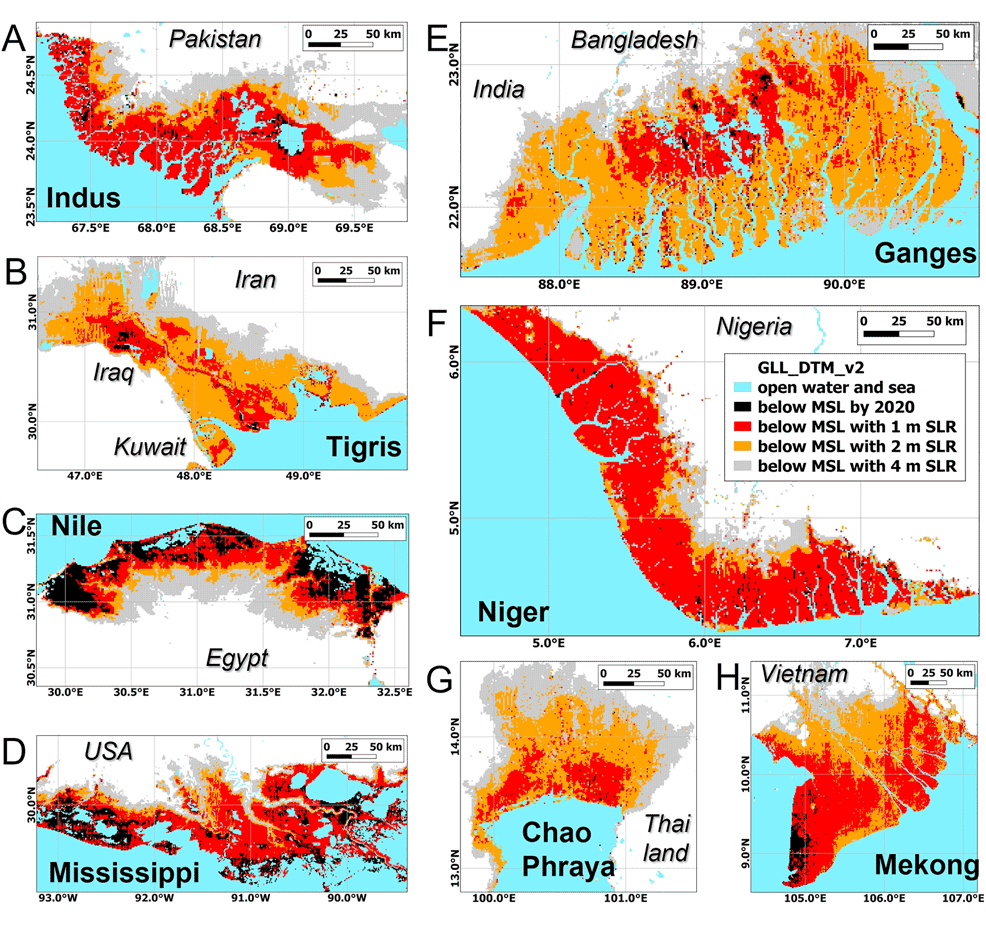
13th February 2023 Rising seas will flood twice as much land as previously thought The first 1 to 2 metres of sea level rise will inundate about twice as much land as older elevation models suggest, based on improved data from a NASA satellite.
Current models of sea level rise suggest the most widespread impacts will occur after the global sea level has risen by several metres – sometime during the 22nd and 23rd centuries. But a new study finds the biggest increases in inundation will occur between 1 and 2 metres (3.3 to 6.6 ft), covering more than twice as much land as the older elevation models predicted. The study used high-resolution measurements of land elevation from NASA's ICESat-2, launched in 2018 as the successor to ICESat-1, which operated from 2003 until 2009. This newer lidar satellite features the most advanced laser instrument of its kind ever built, which can generate more accurate models of sea level rise and inundation. Previous assessments typically relied on radar-based data, which are less precise. "Radar is unable to fully penetrate vegetation, and therefore overestimates surface elevation," explained Ronald Vernimmen, a scientist at the Dutch research firm Data for Sustainability who led the study, which appears in the peer-reviewed journal Earth's Future. Many coastal areas are lower than previously thought. These underestimates of land elevation mean that coastal communities will have less time to prepare for future sea level rise, with bigger impacts occurring sooner than expected. After those first few metres of sea level rise, the rate at which the land area falls below mean sea level decreases. The figure below illustrates this alarmingly well. Shown here are examples of eight deltas that could be largely flooded with 1 metre of sea level rise (SLR) and almost entirely at 2 metres. This includes heavily populated areas that may need to be evacuated, unless they can build extensive flood defences, and unless greenhouse gas emissions are reduced. Even under a moderate emissions scenario, a global sea level rise of 1 metre is possible by 2100, i.e. within the lifetime of many people alive today.
Vernimmen works on flood protection and spatial planning advisory projects. Using the new measurements of land elevation, he and co-author Aljosja Hooijer found coastal areas lie much lower than older radar data had suggested. Analyses of the new lidar-based elevation model revealed 2 metres of sea level rise would submerge up to 2.4 times the land area compared with radar-based models. For example, older data suggested that Bangkok would still be largely above mean sea level (MSL) with a 2 metre (6.6 ft) increase. But the new lidar-based data shows that such a rise in sea level could put most of Bangkok and its 10 million residents below sea level. In total, after 2 metres (6.6 ft) of sea level rise, the researchers estimate that 240 million more people will live below the mean sea level. After 3 and 4 metres (9.8 and 13 ft) of sea level rise, that number increases by 140 million and by another 116 million, respectively. Cities below sea level could avoid being submerged in the future, by building protective levees, dikes, and pumping stations; Amsterdam and New Orleans are modern examples of this. However, such measures can be expensive and take decades to implement. If vulnerable communities want to mitigate the most damaging impacts, they need to act before the sea rises those first few metres, according to Vernimmen.
Comments »
If you enjoyed this article, please consider sharing it:
|








